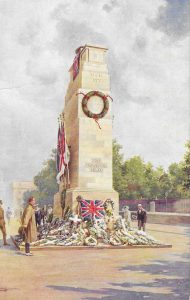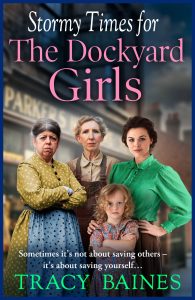
Peace Day – Saturday 19th July 1919
My latest book, Stormy Times for the Dockyard Girls opens on Peace Day in 1919
Until I started planning the book I was unaware of its existence. Of course, I knew that the armistice was signed on 11th November, but that was the sum of my knowledge. Peace Day intrigued me.
The war didn’t end when the armistice was signed. It was merely a cessation of hostilities. The armistice was originally to last a month. It was renewed in December, and again in January. Peace talks didn’t even begin until 18th January 1919 when the armistice was renewed again, this time for a year. No one knew how long the talks would go on for, or what the result would be.
Ministers and heads of state from the allied nations and members of the German high commission gathered in Paris to finalise details.
In the months that followed the parties argued over the fine detail. There was a price to be paid, but what could possibly compensate for such terrible loss of life, of waste. Reparation was on the agenda – and a desire to make sure it never happened again.
The Treaty of Versailles
The Treaty of Versailles was signed on 28th June 1919, drawing a line under negotiations that had been going on for months.
While talks continued, plans were made for a commemoration and thanksgiving service.
Not everyone felt that celebration was appropriate, including some of the war cabinet. Ex-servicemen discharged and demobilised, had been left without work, and those disabled and likely unable to work again saw no cause for jubilation. Added to that number were many thousands of widows and children who needed to be provided for. Surely, money raised would be better spent helping them?
Even so, the overall feeling was that some sort of muted celebration was called for.
Originally, plans were mooted for four days in the first week of August, but the King did not want to wait. He wanted them to take place in the week after the treaty was signed – otherwise it would look as if the nation was not grateful in their thanks for the sacrifice made by so many.
Plans for a national celebration of peace
Lord Curzon, a member of the war cabinet, stressed the need for careful preparation and a compromise was reached. Thanksgiving services would be held on the 6th July and a national celebration of Peace on the 19th – giving Curzon 18 days with which to organise vast parades in London.
Events were planned all over the country, large scale and small.
In Grimsby, as in many towns and villages around the British Isles, the military paraded down the streets, bands played in the parks, and an evening firework display brought an end to the celebrations. It was a move to leave the war behind and go forward with hope.
Have you seen Hope Street?
The Grimsby Telegraph told of the ‘spirit of quiet jubilation in keeping with the occasion’.
This particular piece caught my eye, and I knew I had to include it in Stormy Times for the Dockyard Girls:
By far the most generous show of flags, streamers etc of any one district was that seen in Hope Street, for though it is regarded as one of the poor quarters of the town, it was richer by far than the districts of villas and big residences.
Everybody was asking on Saturday, ‘Have you seen Hope Street?’
The area was quite often the butt of comedians’ jokes, but they put on a display that was the talk of the town and raised a sum of £80.5s.6d. – a vast amount in those days. £43.13s.6d was in coppers: pennies, halfpennies and farthings. People had emptied their pockets. It was a magnificent sum for the benefit of St Dunstan’s Hostel for blind Servicemen.
I think that sums up the spirit of the folk I’m writing about. Hard working and generous-spirited, who may have little, but share what little they have.

